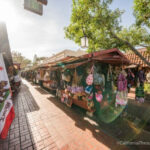Nestled in Hudson Falls, New York, the Moss Street Cemetery stands as a remarkable testament to local history. Recognized for its historical importance with a listing on the National Register of Historic Places in 2017, this cemetery is more than just a burial ground; it’s a chronicle of Kingsbury’s early settlement and development. The Moss Street Cemetery serves as the final resting place for numerous prominent Kingsbury residents, including pioneers from the eighteenth century and brave veterans of the American Revolution.
A Glimpse into Kingsbury’s Past at Moss Street Cemetery
While unassuming in its design, the Moss Street Cemetery holds profound connections to the historical evolution of Kingsbury. It is considered one of the oldest dedicated cemeteries in the town, offering a tangible link to the area’s formative years. Within its grounds lie the remains of significant early inhabitants, among them soldiers who served in the American Revolution, the War of 1812, and the Civil War. The earliest known burial may predate the cemetery’s formal establishment, potentially dating back to the 1780s with the interment of a Native American veteran of the French & Indian War, whose identity remains unknown.
Although burials occurred earlier, the formal establishment of the Moss Street Cemetery came in 1804. In this year, a group of Kingsbury residents, acting as trustees, purchased land from Simeon Moss specifically to create a public cemetery. This original land parcel, just over an acre, was later expanded in the 1870s with additional purchases to the south and west, accommodating the growing community. Historical records suggest that Moss Street Cemetery is likely the third oldest burial ground established in Kingsbury, highlighting its enduring presence in the town’s landscape.
Witnessing History: The “Year of the Great Burning”
The early settlers of Kingsbury faced immense hardships, particularly during the American Revolution. The year 1780 stands out as a period of intense tribulation, remembered locally as “The Year of the Great Burning.” British raiders inflicted widespread destruction across the region, leaving a lasting impact on the community. The Moss Street Cemetery, established around this tumultuous time, serves as a silent witness to the resilience and perseverance of Kingsbury’s early inhabitants during these challenging times.
Funerary Art Through the Ages at Moss Street Cemetery
Beyond its historical context, the Moss Street Cemetery is also notable for its collection of funerary art, showcasing evolving styles from the early nineteenth century to the present day. The oldest surviving gravestones, dating back to the first decade of the 1800s, exhibit Neoclassical design elements. This style, inspired by ancient Rome, was prominent in American material culture during this era, influencing architecture and decorative arts of the Federal style. As you explore the cemetery, you’ll encounter a diverse and representative array of funerary art that spans the nineteenth and twentieth centuries, offering a visual timeline of changing artistic tastes and memorial practices.
By walking through the Moss Street Cemetery, visitors can connect with the rich history of Hudson Falls and Kingsbury, paying respects to those who shaped the community and reflecting on the passage of time as marked by the stones and stories within this historic burial ground.

